Introduction: DIY Retractable Book Lamp: Illuminate Your Reading
Welcome to the DIY Retractable Lamp project! In this Instructable, we'll guide you through creating a unique lamp that illuminates when opened and automatically turns off when closed. What sets this lamp apart is its innovative linear mechanism, designed to securely hold the lamp in the opened and closed position, preventing accidental movements. This mechanism also serves as the heart of the project, automatically switching the light on and off as you open and close it.
Whether you need a nightlight, a reading lamp, or a decorative piece, this DIY Retractable Lamp is functional and stylish. Let's dive into the detailed steps to bring this project to life!
Supplies
Before we begin, here's a list of supplies you'll need for this project:
- 3x Neodymium magnet circular k800
- 1x Limit switch 1A 125v
- 1x XL6009 DC-DC step-up converter module
- 1x TP4056 1A Li-ion charging module (type-C)
- 4x LED strip pieces 12v (warm white)
- 1x 18650 3.7v Rechargeable Li-ion cell
- 1x 1s 18650 Battery holder
- 2x M3 8mm brass inserts
- 2x M3 10mm CSK screws
- Mylar Sheets (or paper)
- 3D Printer
- Soldering Station
- Hot Glue Gun
- Digital Multimeter
- Basic Tools (screwdriver, pliers, super glue, etc.)
Step 1: Designing Parts in Fusion
Begin by designing the necessary parts for the lamp in Fusion 360 and export the STL files.
Step 2: Slicing and 3D Printing
Slice the STL files with appropriate settings and 3D print the parts.
Configuration : (for reference)
- Layer height - 0.2 mm
- Infill density - 20%
- Print speed - 50mm/s
- Printing temperature - 230 C
- Printing material - PLA
Step 3: Preparing for the Mechanism
Gather the supplies for making the mechanism, including magnets, printed shafts, and the limit switch.
Step 4: Soldering the Wire on the Switch
Solder two wires to the limit switch, attaching them to the common and normally closed positions.
Step 5: Attaching Switch in Outer Shaft
Glide the limit switch into the housing of the outer printed shaft to secure it, ensuring it presses when the internal shaft passes through it from the top.
Sorry for not demonstrating the wires, assume it is for some steps!
Step 6: Attaching Magnet on Inner Shaft
Attach a magnet inside the inner shaft using super glue.
Step 7: Testing the Sliding Mechanism
Test the sliding mechanism to ensure it can turn the limit switch as required.
Step 8: Attaching Magnets on Outer Shaft
Attach circular magnets on both sides of the outer shaft, ensuring opposite poles on the internal side for holding the lamp when retracted.
Step 9: Testing the Magnetic Strength
Ensure the mechanism can withstand force and moves smoothly in linear motion.
Step 10: Take a Look!
Observe the beautifully crafted mechanism.
Step 11: Circuit Diagram
Follow the attached circuit diagram and design your circuit.
Step 12: Soldering the Circuit
Solder all components as per the circuit diagram except connections for the LED strip and limit switch.
Step 13: Installing the Circuit
Install components in the printed base part using a hot glue gun, placing the charging module in the correct cutout.
Step 14: Inserting the Brass Inserts
Use a soldering iron to insert brass inserts in required slots.
Step 15: Connecting the Battery
Place the battery in the holder with the correct polarity.
Step 16: Attaching the Mechanism
Attach the mechanism to the base part in the right slot, secure it with super glue, and connect the limit switch according to the circuit diagram.
Step 17: Securing Middle Layer
Place the printed middle part in the slotted base part and attach with screws.
Step 18: Cheaking the Output Voltage
Check the output voltage of the XL6009 DC-DC step-up converter module and adjust if needed.
Step 19: Soldering Led Strips Together
Solder LED strip pieces together in pairs.
Step 20: Attaching LED Strips
Attach LED strips to both inner faces of the lamp.
Step 21: Attaching the Top Part
Attach the printed top part to the top of the inner shaft and secure with super glue.
Step 22: Crafting the Retractable Diffuser
Design and fold the mylar sheet (or paper) for the diffuser.
Step 23: Attaching the Diffuser
Attach the diffuser to the lamp through designed slots and rings.
Step 24: Testing the Lamp
Test the lamp for sliding mechanism, retraction capability, magnetic strength, overheating, and other issues.
Step 25: Final Thoughts!
Congratulations on completing your DIY Retractable Lamp project!
The linear mechanism in this lamp, coupled with the automatic on/off feature, makes it a standout piece for various purposes. Whether you're using it as a nightlight to guide your way in the dark, as a reading lamp to illuminate your favorite books, or as a decorative element that adds ambiance to your space, this lamp is designed to enhance your experience.
We hope this Instructable has inspired you to explore new avenues in crafting and electronics. Enjoy your DIY Retractable Lamp and may it light up many moments of joy and creativity in your life!
Happy making!

Participated in the
Books and Bookshelves Contest


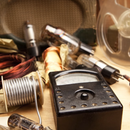
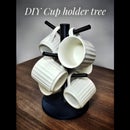




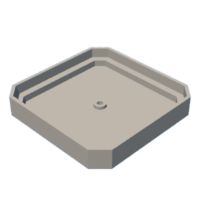
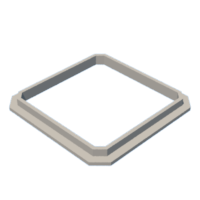
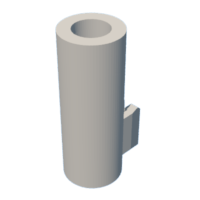





![Tim's Mechanical Spider Leg [LU9685-20CU]](https://content.instructables.com/FFB/5R4I/LVKZ6G6R/FFB5R4ILVKZ6G6R.png?auto=webp&crop=1.2%3A1&frame=1&width=306)


